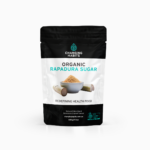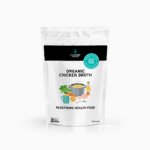It seems that on a daily basis I am called upon by radio stations around the country and internationally to give my opinion on food, nutrition and health matters. I was asked by London radio a couple of weeks ago to be on a forum regarding the escalation in stomach banding operations that had occurred this year. The rate had increased by 50% in a 12 month period! There were a few people on the forum with me and one particular individual kept repeating the fact that everything in moderation and that exercise was the most important factor.
I could not agree with this statement.
Everything in moderation should be everything from nature that we have consumed throughout evolution but nothing from a chemical laboratory such as margarine, modified milk, additives, preservatives, flavours, soy protein isolate etc etc etc. You have heard it from me many many times and I don’t need to keep repeating it. Exercise also is not the be all and end all. Now don’t get me wrong. There must be a mix of great quality food with a physically active body that will help people avoid the sickness and obesity epidemic. I hope the 1.6 million viewers understood what I was saying as it is so important not just to stop stomach banding, but to stop the obesity and sickness epidemic that seems to be scourging the western world.
People just don’t get it. The food choices you make not only affect global warming but also economic policy and individual and overall world health plus drug and medication abuse to name just a few. And you thought eating was merely about filling your belly. Imagine if you ate everything in moderation, to me it is just the stupidest most ridiculous statement I’ve ever heard!
My goal is to make a difference in this world and it is imperative to give you information about the food industry that will hopefully create change what you eat. You see I have an altruistic goal; to stop food companies making food that not only affects global warming but is also dangerous for you. Much of the food on the supermarket shelf may be edible but will make you and the planet sick.
Here is something else that you should know. I did this research as a result of the ABC calling me last week to talk about the mandatory fortification of Iodine in bread. I had been a little complacent with the iodine issue but once prompted it was interesting to see where the iodine is sourced.
As of October 9th there will be a mandatory fortification of our bread with iodine; this will come about by asking the bakers to use iodised salt instead of just salt.
I thought that can’t be too bad, mainly because I make my own bread and buy organic for my son (who won’t eat my bread). But then it is not just about me and I hate mass medication or fortification and felt it was important to research the issue. So I did the most sensible thing and called saxa salt, other wise known as Cerebes to ask what was the source of their iodine. Guess what, they didn’t know??? Even the food technologist could not tell me! All she could do was send me some propaganda about the salt and the need for iodine.
So research I did!!!
Most iodine in salt comes from mined deposits of sodium iodate (NaIO3) and sodium Periodate (NaIO4) found in Japan and Chile. Potassium Iodate is the most common form found in our salt and is produced by the electrochemical reaction of elemental iodine with potassium hydroxide (KOH) – sounds yummy!!!! Cerebes (saxa) receives the potassium iodate as natural form powdered iodate/iodine; a rather loose term for what it really is.
This powder is then mixed into the salt in the ration of 2.5mg to 100mg salt and that is refined salt, with anticaking agents and bleaches.
You’re probably wondering what does that all mean. Basically it means that the iodine you get when you consume iodised salt which is then put in your bread is not from plant materials but from rocks. Now let me think, do we eat rocks to get our minerals and nourishment. The answer is a resounding NO!!!! So why would they put it in our salt? Why do they do this to our food supply?
Why do we need Iodine and why do we need to fortify bread? The World Health Organisation have identified that there is a world wide deficiency in the diet for iodine and they recommend that the RDA for Iodine should be between 90 -150 mcg per day. Iodine is needed by the thyroid; in fact the thyroid is the only organ to use iodine to make thyroxine T3 and T4. Without iodine, diseases such as mental retardation, cretinism, hypothyroidism, hashimotos and graves disease can manifest. An iodine excess is rare but thirty times the RDA may result in mouth ulcers, metallic taste, swollen salivary glands, diarrhea, vomiting, headaches, rashes and learning difficulties.
There is no doubt we need iodine on a regular basis and there is no doubt that we have a soil deficiency of Iodine in Australia. The best way I know to get it is to make sure that your sea salt has dulse or kelp (both seaweeds) in it so that every day you are getting your dose of plant based iodine, not some rock based powdered iodate.
UHP Ultra High Pressure Processing Technology
Here is something else you may not be aware of that has only come to my attention in the last couple of weeks. Following is the news release put out by Fressure Foods.
A new food preserving technology is set to double the shelf life of avocados, create up to 80 new jobs and boost New Zealand’s annual exports by NZ$20 million.
Kiwi owned Fressure Foods plans to import Ultra High Pressure (UHP) processing technology, which is used in more than 50 countries to increase the shelf life of locally grown avocados.
Fressure Foods CEO Vern Dark says avocados usually last around 30 days but with the new technology his company will be able to extend this to 60 days, increasing local supply and export revenue.
Dark says Ultra High Pressure treatment is also known as cold pasteurisation and uses pressures of up to 87,000 psi to shock and kill bacteria in food products.
“The UHP system uses no chemicals or preservatives and does not affect the texture, flavour, consistency or nutrients in the food. It has also been recognised by the U.S Food and Drug Administration (FDA),” said Dark
The process causes no emissions and consumes less energy than thermal pasteurisation, he said…….. (end of news release)
It was very hard to find much information on this technology, but basically this is a process where food is squashed to goodness!
UHP places food under extremely high pressure, killing bacteria that cause decay and disease while leaving the food relatively untouched. It is cold pasteurisation. Bacteria have weaker cell membranes/walls then those of animals and plants and the theory is that the high pressure kills the bacteria but leaves the food alone.
The process is relatively straight forward. The food is packaged up and slid inside a containment cylinder. Once the whole chamber is firmly clamped shut, it’s filled with water. This will distribute the pressure evenly throughout the food sample. Then it’s time to apply the pressure. The pressure is delivered from this intensifier pump which drives a piston inside the chamber.
This high pressure only needs to be held for around 30 seconds to do its job.
Putting the squeeze on food is like pasteurising milk: it kills the active bacteria but doesn’t kill their spores, ultra high pressure is a replacement for pasteurisation, not sterilisation, so the foods that are being looked at for the technology are either acidic foods like fruit juices, fruit products, sauces, salsa, avocado, and also refrigerated products like guacamole, sliced meats and the food list is expanding as to what UHP can be used on.
For me the jury is not out yet, I can’t find enough information on the impact this processing has on food, all I can find is how it is done. But just like the pasteurisation of milk in time we saw that the destruction of essential enzymes in the milk has probably been the upward surge in milk allergies that we have seen over the last 15 years. It seems like everytime I turn a corner there is something new that they are doing to food.
Stick to your farmers markets. There are more than 120 farmers’ markets trading throughout Australia, and going to your local one is a great way to support local producers, secure fresh food, connect with your community and reduce your food miles. John White, general manager of Regional Farmers Markets in Victoria, has these simple tips for making the most of your weekend shopping trip.
• Arrive early armed with your reusable bags (and bring chill bags for produce that you want to keep cool).
• Some stalls have EFTPOS but you can’t count on it, so bring plenty of cash.
• If you’re new, do a lap of the market first to get a feel for the types of producers there, before you start buying.
• Taste the food! Take advantage of the samples on offer, whether chutney sauces, jams, oils or cheeses. Ask the producers about how to cook their items and for recommended recipes.
• If you are a regular, build up a rapport with stall holders and you might be able to get multi-buy deals.
Bring a strong partner or friend to help you carry your purchases back to the car!
Visit www.rfm.net.au








0 Comments